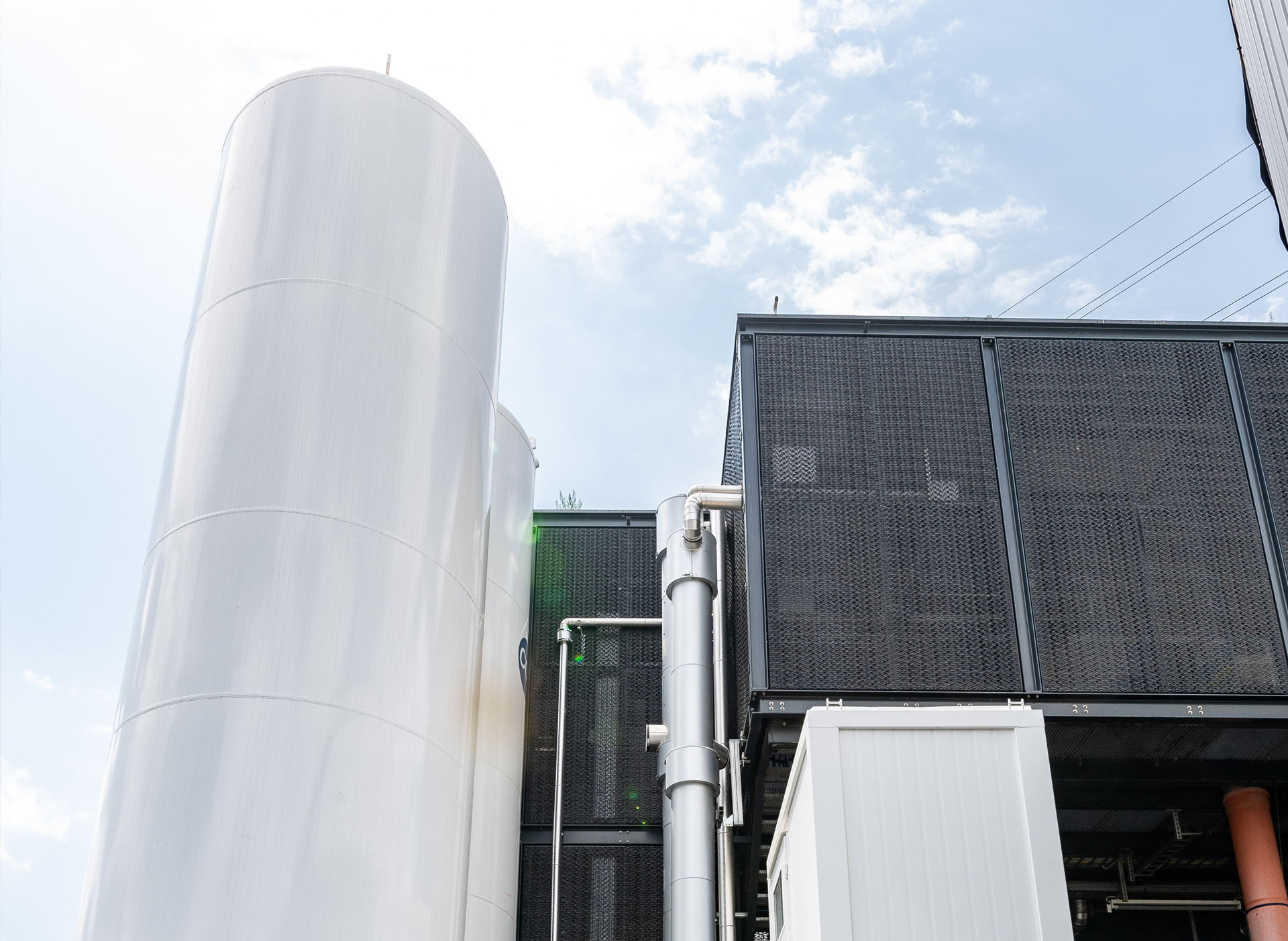
CO2 Liquefaction Facility in Nesselnbach Officially Inaugurated
Yesterday, Regionalwerke AG Baden and Recycling Energie AG celebrated the start of operations of the CO2 liquefaction facility in Nesselnbach, Canton Aargau, with a ceremony and invited guests from politics and business. Kanadevia Inova developed the plant for turnkey delivery on behalf of the operating company CO2 Energie AG. It is a significant milestone on the road to decarbonising the Swiss energy system.
Nesselnbach, Switzerland. Yesterday, Tuesday, saw the official inauguration of the CO2 liquefaction facility in Nesselnbach in the Swiss canton of Aargau. The project is an example of best practices in terms of optimising circularity and maximising the recycling of resources. Carbon dioxide (CO2) from the upgrading of biogas that was previously released into the environment is now used in industrial applications, for example in processes in the pharmaceutical, medical and food industries.
Existing Concept Evolved
The Recycling Energie AG site includes a biogas plant whose raw gas has already been refined by Regionalwerke AG Baden (RWB) since 2018 to produce biomethane, a natural gas substitute, which can be fed into the grid. The process involves separating carbon dioxide and methane, the two main components of the raw biogas. The biomethane is generally fed into the existing grid infrastructure for distributed use in heat and power generation. The CO2 bound in the biogenic substrates and separated in the gas treatment process, on the other hand, is usually released into the atmosphere.
“By expanding the plant, a very complex undertaking from a technical point of view, CO2 Energie now makes it possible to use this by-product,” explained Philippe Lehman, CEO of CO2 Energie AG, at the opening ceremony. “It’s fed from the gas upgrading plant to the liquefaction unit where it is purified, filtered and dehydrated in several sub-steps. The gas is liquefied by cooling it to minus 24 degrees Celsius. This allows it to be compressed into tanks for storage and transport.”
The CO2 needed in numerous applications can thus be provided from renewable sources. This reduces the use of carbon dioxide of fossil origin and promotes decarbonisation.
Effective Project Partnership
CO2 Energie AG commissioned Kanadevia Inova to deliver this project at the end of 2021. Thanks to an extensive portfolio of green-gas-related technologies within the group, the green tech company was an accomplished project partner with the ability to coordinate all the work involved in the process. “We’re delighted to be able to celebrate the unveiling of this pioneering climate protection project with our client today,” said Dr Benoît Boulinguiez, Managing Director of one of the German Kanadevia Inova companies in charge of developing and producing the CO2 liquefaction facility. “Hopefully concepts of this kind will set a precedent and drive decarbonisation forward.”
The plant, which is of modular container construction with two scrubbing towers, almost completely recycles the carbon dioxide produced: up to 3,000 tonnes per year. It was manufactured at the Kanadevia Inova site in Zeven, northern Germany, where most of Kanadevia Inova’s gas upgrading and liquefaction teams work.
Download media release
Download Image 1 Caption: Pioneering climate protection project: The CO2 liquefaction plant in Nesselnbach, Switzerland (Picture credits: Regionalwerke AG Baden)